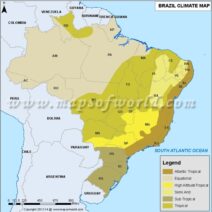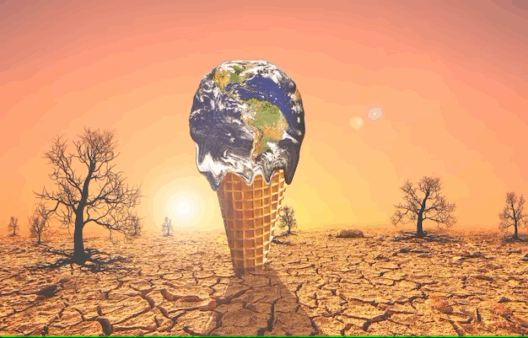Climate is a complex interplay of various atmospheric, terrestrial, and oceanic components that govern the long-term behavior of weather patterns in a specific geographical area. Understanding what determines climate not only enriches our comprehension of meteorological phenomena but also equips us with the knowledge necessary to address the pressing challenge of climate change. As a cumulative result of factors such as latitude, altitude, and ocean currents, each locale exhibits distinctive climate characteristics, which can be dissected through a scientific lens.
The foundation of climate science begins with the concept of energy balance. Solar radiation serves as the primary energy source for Earth’s climate system. The angle at which sunlight strikes the Earth is fundamentally influenced by latitude. Areas near the equator receive direct sunlight year-round, leading to warmer temperatures. In contrast, polar regions are subjected to more oblique angles of solar incidence, resulting in cooler climates. This variance illustrates the principle of insolation—incoming solar radiation—which directly impacts regional temperature and weather patterns.
Moreover, the Earth’s axial tilt plays a crucial role in shaping climatic variations. The tilt of approximately 23.5 degrees results in seasonal changes, as different parts of the globe receive varying amounts of sunlight throughout the year. This phenomenon not only dictates the four conventional seasons—spring, summer, autumn, and winter—but also influences local ecosystems and biodiversity. Regions experiencing more drastic seasonal changes often support a wide array of flora and fauna adapted to withstand these transitions.
Altitude is another significant factor that contributes to climatic distinctions. As elevation increases, temperature typically decreases due to the thinning atmosphere. This latitudinal gradient in temperature creates biogeographical barriers and influences habitats. The orographic effect further exemplifies altitude’s impact on climate. Mountain ranges can block moisture-laden winds, leading to differential precipitation patterns. The windward side often experiences lush vegetation due to ample rainfall, whereas the leeward side, known as the rain shadow, can be markedly arid and desolate.
In addition to latitude and altitude, proximity to water bodies, including oceans and lakes, dramatically influences climate. This phenomenon is best illustrated by the maritime effect, where coastal regions experience milder temperatures and increased humidity due to the moderating influence of large water bodies. In contrast, continental climates, located further from the coast, often endure more extreme temperature fluctuations. The capacity of water to absorb and release heat more slowly than land leads to these contrasting experiences. Ocean currents, too, play an indispensable role in regulating climate. Warm currents, such as the Gulf Stream, can elevate temperatures in regions that would otherwise be significantly cooler, while cold currents can have the opposite effect.
The interplay of pressure systems further complicates climate. High-pressure systems typically bring clear skies and fair weather, while low-pressure systems can lead to unstable conditions and precipitation. The distribution of these atmospheric pressure zones, driven by the uneven heating of the Earth’s surface, establishes global wind patterns. For instance, the trade winds and the westerlies are crucial in shaping climatic outcomes across different latitudes. These winds often transport moisture and redistribute heat, contributing to the overall balance of the Earth’s climate system.
Moreover, local geographical features can engender microclimates—small, localized climate variations distinct from the surrounding area. Urbanization also induces a significant climatic influence known as the urban heat island effect. Cities tend to absorb and retain heat due to extensive concrete and asphalt surfaces, resulting in elevated temperatures compared to rural areas. Understanding these phenomena is paramount for mitigating urban climate challenges, such as heatwaves and air quality deterioration.
Climate also undergoes changes over extended periods, influenced by natural phenomena like volcanic eruptions and solar activity. Volcanic eruptions can inject ash and sulfur dioxide into the stratosphere, resulting in temporary cooling effects by reflecting sunlight. Conversely, variations in solar output can influence long-term climate trends, leading to periods of glaciation or warming. These natural events underscore the intricacies of Earth’s climate system and the dynamic nature of its forces.
Human activities, particularly since the Industrial Revolution, have significantly exacerbated climatic changes through greenhouse gas emissions. The combustion of fossil fuels, deforestation, and industrial processes have contributed to an unprecedented increase in atmospheric carbon dioxide, leading to global warming. The resulting alterations in precipitation patterns, sea-level rise, and extreme weather events highlight the urgent need for a multifaceted approach to climate policy and action.
In conclusion, the determination of climate is a multifarious phenomenon shaped by an array of natural and anthropogenic factors. An appreciation of the intricate tapestry of variables—latitude, altitude, water bodies, pressure systems, and human activities—offers invaluable insight into the behavior of our planet’s climate. As environmental stewards, understanding these dynamics is essential for fostering informed discussions and strategic actions toward a sustainable future. The science behind climate is not merely an academic pursuit; it is fundamentally intertwined with our survival and the health of the ecosystems that sustain us.








